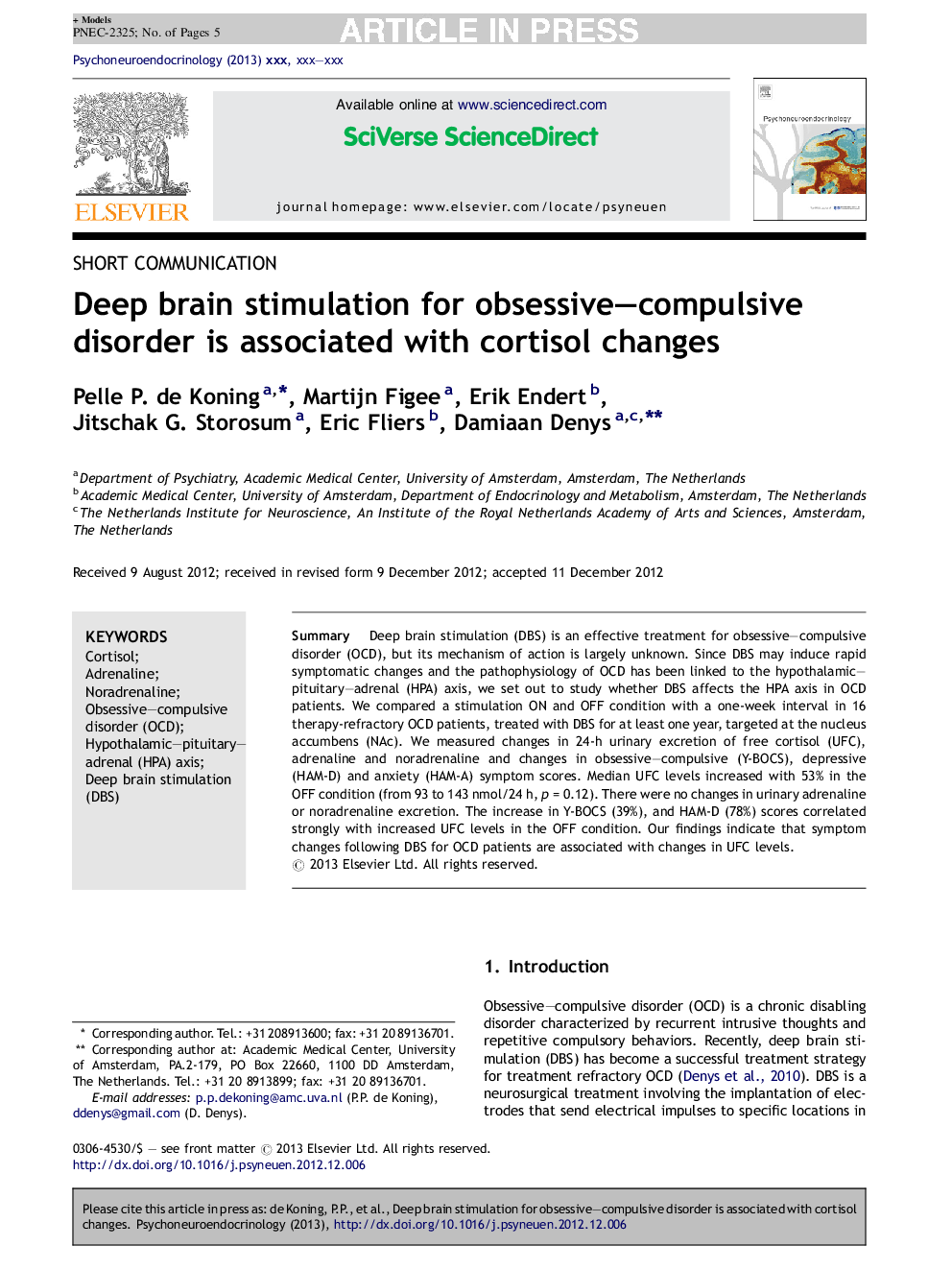| کد مقاله | کد نشریه | سال انتشار | مقاله انگلیسی | نسخه تمام متن |
|---|---|---|---|---|
| 10306674 | 547416 | 2013 | 5 صفحه PDF | دانلود رایگان |
عنوان انگلیسی مقاله ISI
Deep brain stimulation for obsessive-compulsive disorder is associated with cortisol changes
ترجمه فارسی عنوان
تحریک مغزی عمیق برای اختلال وسواس فکری با تغییرات کورتیزول همراه است
دانلود مقاله + سفارش ترجمه
دانلود مقاله ISI انگلیسی
رایگان برای ایرانیان
کلمات کلیدی
موضوعات مرتبط
علوم زیستی و بیوفناوری
بیوشیمی، ژنتیک و زیست شناسی مولکولی
علوم غدد
چکیده انگلیسی
Deep brain stimulation (DBS) is an effective treatment for obsessive-compulsive disorder (OCD), but its mechanism of action is largely unknown. Since DBS may induce rapid symptomatic changes and the pathophysiology of OCD has been linked to the hypothalamic-pituitary-adrenal (HPA) axis, we set out to study whether DBS affects the HPA axis in OCD patients. We compared a stimulation ON and OFF condition with a one-week interval in 16 therapy-refractory OCD patients, treated with DBS for at least one year, targeted at the nucleus accumbens (NAc). We measured changes in 24-h urinary excretion of free cortisol (UFC), adrenaline and noradrenaline and changes in obsessive-compulsive (Y-BOCS), depressive (HAM-D) and anxiety (HAM-A) symptom scores. Median UFC levels increased with 53% in the OFF condition (from 93 to 143 nmol/24 h, p = 0.12). There were no changes in urinary adrenaline or noradrenaline excretion. The increase in Y-BOCS (39%), and HAM-D (78%) scores correlated strongly with increased UFC levels in the OFF condition. Our findings indicate that symptom changes following DBS for OCD patients are associated with changes in UFC levels.
ناشر
Database: Elsevier - ScienceDirect (ساینس دایرکت)
Journal: Psychoneuroendocrinology - Volume 38, Issue 8, August 2013, Pages 1455-1459
Journal: Psychoneuroendocrinology - Volume 38, Issue 8, August 2013, Pages 1455-1459
نویسندگان
Pelle P. de Koning, Martijn Figee, Erik Endert, Jitschak G. Storosum, Eric Fliers, Damiaan Denys,
